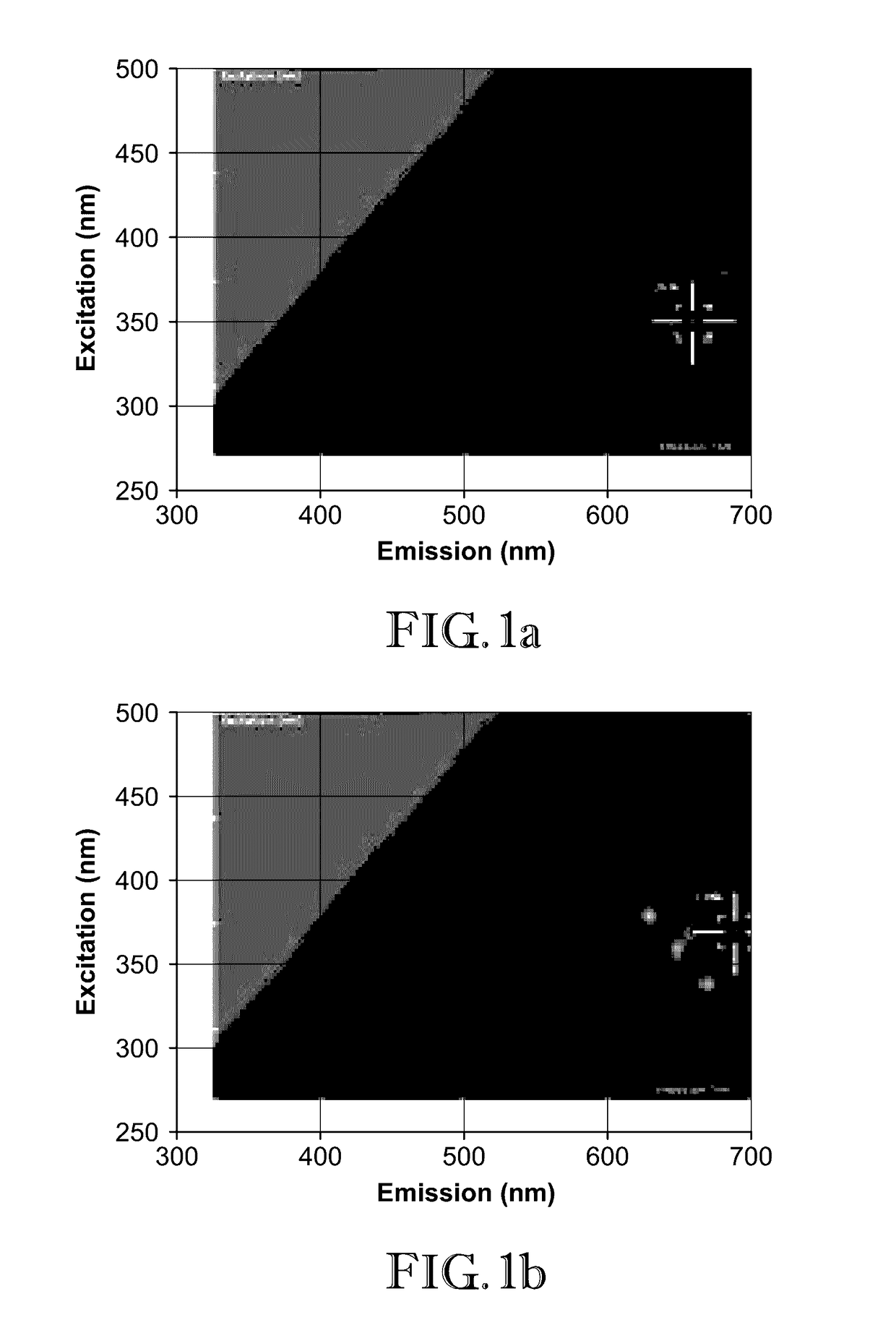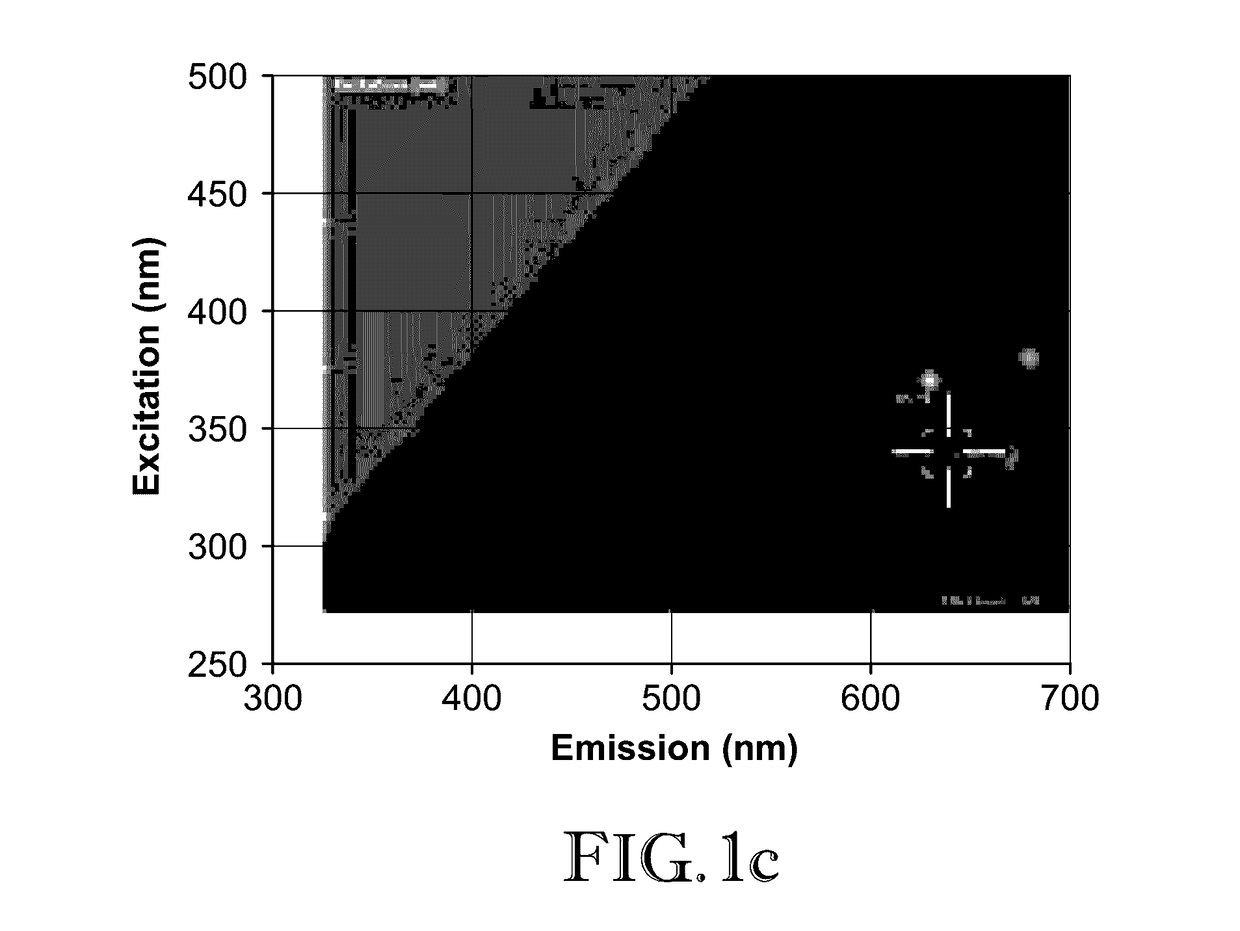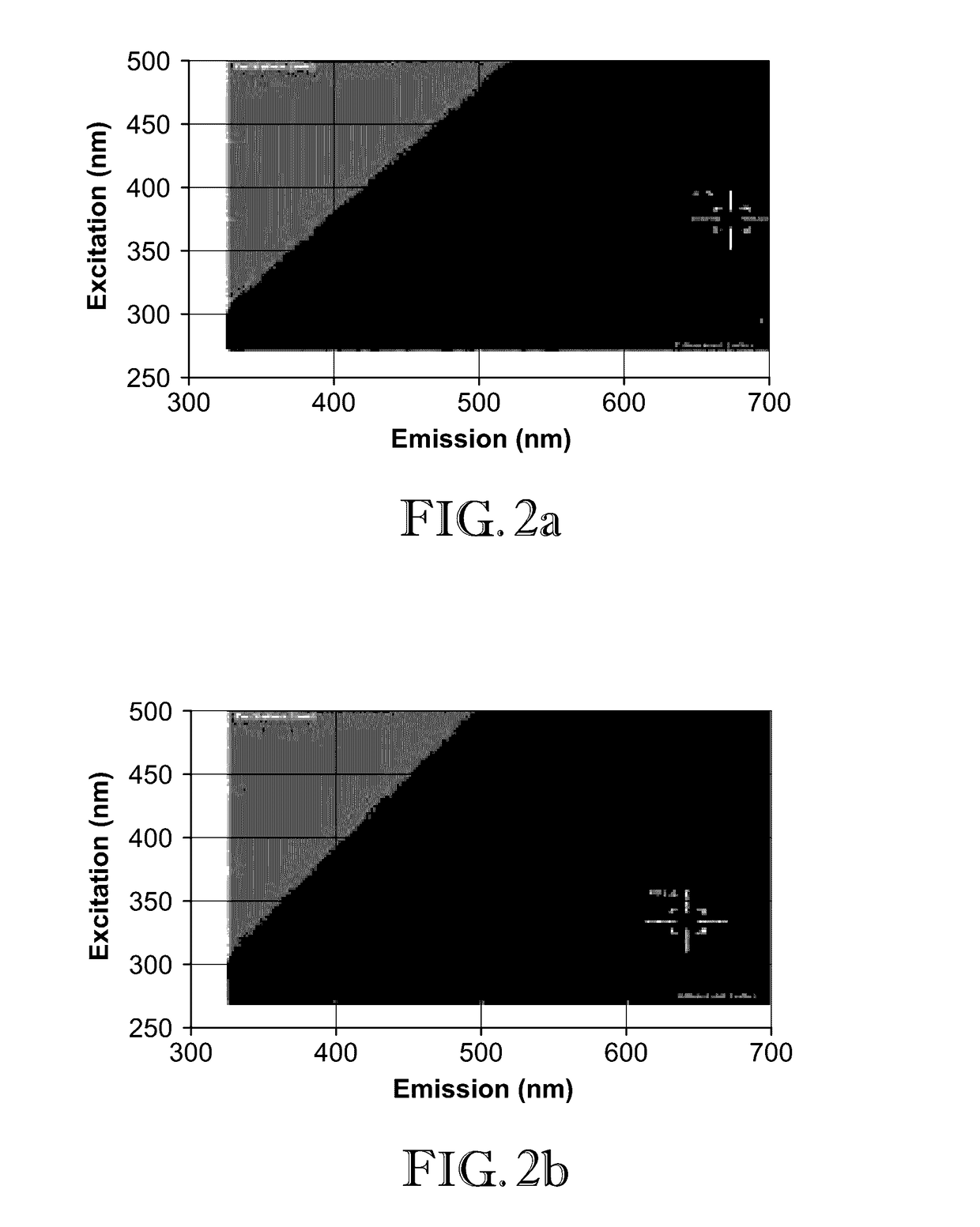Two-dimensional fluorescence difference spectroscopy characterization of nanoparticles and their interactions
a nanoparticle and fluorescence difference technology, applied in the field of two-dimensional fluorescence difference spectroscopy characterization of nanoparticles and their interactions, nanoparticle complexes, etc., can solve the fundamental, if not disturbing, gap regarding the biochemical and biological activities of these nanomaterials, and the lack of understanding of the effect of many nanomaterials on the structure-function of nucleic acids and proteins, cell metabolism, cell signaling, etc., to achieve the highest fluorescence intensity
- Summary
- Abstract
- Description
- Claims
- Application Information
AI Technical Summary
Benefits of technology
Problems solved by technology
Method used
Image
Examples
example 1
[0046]In this example, 2D-FDS was used to illustrate how two proteins, Luciferase and b-Galactosidase, interact with zinc oxide nanoparticles (ZnO-NP). Particularly, the shift in the excitation and emission wavelength intersect resulting from attachment of the proteins as compared to the uncomplexed nanoparticles was observed.
[0047]Dry powders of nanomaterials were weighed out in milligram quantities and suspended in spectral grade water. Once suspended at the intended concentration (mg / mL), the nanoparticles were ultra-sonicated to evenly disperse the particles throughout the solution. The nanoparticles were transferred to a black 96 well microplate at a volume of 200 μL, and the plate was inserted into a Spectramax i3x 2D-FDS instrument from Molecular Devices. This spectrophotometer (instrument) utilizes Softmax Pro 6.4.2 software to specify the measurement parameters. To generate the 2D-FDS data, the settings were adjusted to detect fluorescence of unknown wavelengths. The spectr...
example 2
[0050]In this example, 2D-FDS was used to illustrate the shift in the excitation and emission wavelength intersect between cobalt-zinc oxide (CoZnO) composite and CoZnO with polyinosinic-cytidylic acid (poly I:C) RNA attached. FIG. 2a illustrates the 2D-FDS excitation / emission optimum for ZnO—Co composite (375 nm / 675 nm, RFU=1.7K). This optimum value shifts upon poly I:C RNA interaction (335 nm / 685 nm, RFU=491) as shown in FIG. 2b. Thus, a shift in the optimal fluorescence intersect was identified when poly I:C RNA interacts with CoZnO nanoparticle composites. Decrease in fluorescence intensity, from 1.7K relative light units to 491, is another indication of interaction, as the fluorescence emitted from the nanoparticle is quenched by the biomolecule loaded onto the surface.
example 3
[0051]In this example 2D-FDS was used to illustrate the shift in the excitation and emission wavelength intersect between ZnO nanoparticle (FIG. 3a); ZnO nanoparticle in the presence of protamine:poly I:C complex (FIG. 3c); boron carbide (B4C) nanoparticle (FIG. 3b); B4C nanoparticle in the presence of protamine:poly I:C complex (FIG. 3d); MgO nanoparticle (FIG. 3e); and MgO nanoparticle in the presence of protamine:poly I:C complex (FIG. 3f). As can be seen FIGS. 3a-f, the optimum excitation / emission intersect is different between the various material pairs. This example again confirms the utility of 2D-FDS as a rapid and sensitive means of quantifying biomolecular interaction with the nanoparticle. This example further illustrate how the peak position shifts and becomes more intense when ZnO nanoparticle (FIG. 3g) interacts with protein:RNA complex (protamine:poly I:C complex) (FIG. 3h).
PUM
| Property | Measurement | Unit |
|---|---|---|
| Nanoscale particle size | aaaaa | aaaaa |
| Nanoscale particle size | aaaaa | aaaaa |
| Nanoscale particle size | aaaaa | aaaaa |
Abstract
Description
Claims
Application Information
 Login to View More
Login to View More - R&D
- Intellectual Property
- Life Sciences
- Materials
- Tech Scout
- Unparalleled Data Quality
- Higher Quality Content
- 60% Fewer Hallucinations
Browse by: Latest US Patents, China's latest patents, Technical Efficacy Thesaurus, Application Domain, Technology Topic, Popular Technical Reports.
© 2025 PatSnap. All rights reserved.Legal|Privacy policy|Modern Slavery Act Transparency Statement|Sitemap|About US| Contact US: help@patsnap.com



